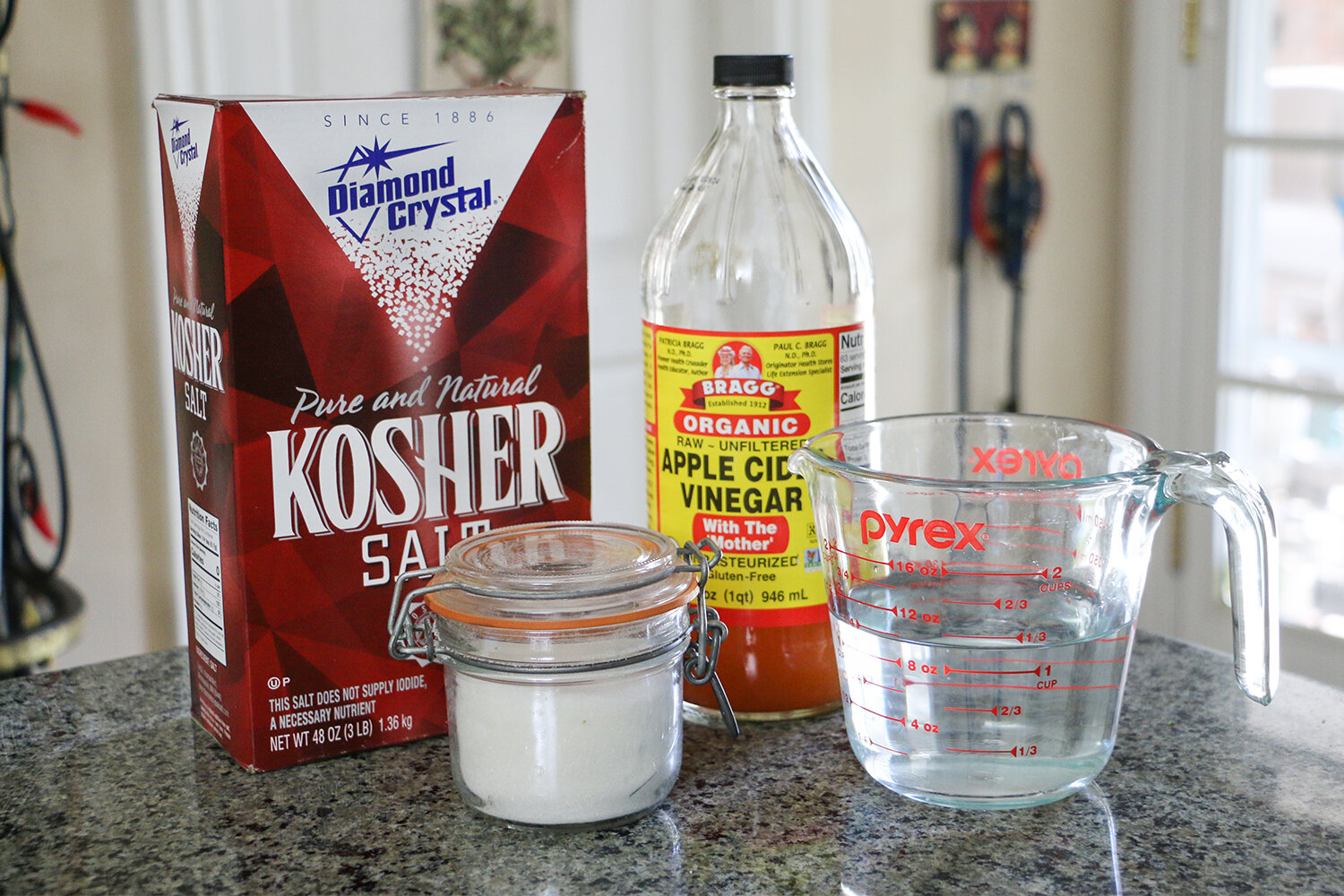Easy Quick Pickled Vegetables
Pickling your own vegetables at home is a simple, cheap, and delicious way to add some pizazz to your homemade meals. Applicable to almost any vegetable you can think of, this recipe gives you a basic outline of how to quick pickle almost anything, along with a few favorite pickled mixes. Great as flavorful side dishes, acidic additions to salads, bowls, and more, or just as healthy refreshing snacks, pickled vegetables really pack in the flavor!
Quick Pickled Vegetables’ Environmental Benefits
Buying in season, local produce and pickling yourself can significantly cut down on the carbon emissions caused by food transportation of jarred and canned goods
Pickling is a great way to preserve the life of your produce while keeping all the nutritional benefits of each, as household food waste is a huge contributor of greenhouse gasses
Buying pre-packaged and convenience food from fast food chains or grocery stores promotes the use of single use containers, utensils, napkins, and more that’ll end up in landfills and oceans, whereas making the same meal at home makes single use items obsolete
Easy Quick Pickled Vegetables
Prep Time: 5 Minutes
Wait Time: 6-12 Hour
Makes 1 Pint Jar
Ingredients:
- 1 cup Water
- ½ cup Vinegar (apple cider, white distilled, red or white wine, rice)
- 1 Tbsp Salt
- 1 Tbsp Sugar
- Vegetable Mix of choice
Vegetable Mixes:
Simple Escabeche (Mexican Pickled Vegetables):
- ½ cup Cauliflower florets
- 2 medium sliced Carrots
- 1 sliced Jalapeño (remove the seeds for less spice)
- 2 cloves sliced Garlic
- 10 whole Black Peppercorns
Garlic Dill Pickles:
- 1-2 small speared Pickling Cucumbers
- 3 Tbsp Fresh Dill (or 1 Tbsp Dried Dill)
- 2 cloves sliced Garlic
Pickled Red Onions:
- 1 large sliced Red Onion
*We’d recommend using Red Wine Vinegar
Or Make your Own!
Instructions:
1. PREP: Gather the ingredients for the vegetable mix that you are making and cut them accordingly. Feel free to cut the ingredients into whatever shape you prefer, just note that larger & thicker pieces will take longer to pickle than smaller ones. Fill an empty mason jar with your ingredients, being sure to pack them tightly as they will compact more during pickling.
2. SIMMER: In a small saucepan, bring the water, vinegar of choice, salt, and sugar to a simmer, stirring occasionally to ensure that the salt and sugar are fully dissolved. Once simmering, remove from the heat. Place your vegetable filled jar into the sink to catch any spills, and carefully pour the hot liquid mixture over top. Depending on how packed the vegetables are, all of the liquid might not fit into the jar (you can use this to make a smaller jar of pickled vegetables if you want).
3. REST: After filling the jar, allow to cool down to room temperature before placing a lid on and storing in the refrigerator. Allow the vegetables to sit for a minimum of 6 hours if you can’t wait, though waiting 12 hours or overnight is recommended. Once they’ve sat, then they are ready to be eaten! These vegetables will last in the fridge for a few weeks or even longer since they are preserved.
Notes:
Choosing Vinegars – You can change the base pickling recipe to fit the type of vinegar you have on hand or pair it to match the ingredients you are pickling. While white distilled vinegar and apple cider vinegar are a great choice for most recipes, don’t be afraid to mix it up! If you’re pickling daikon or Japanese cucumbers, try using rice vinegar or rice wine vinegar instead. Pickling Different Vegetables – Almost any vegetable can be pickled, so try out some different vegetables that you might have on hand. Pickled radishes and daikon are a great topping for rice bowls, while pickled beets are a nice addition to salads. Asparagus, bell peppers, cabbage, green beans, turnips, peppers & chilis, you name it, and it’ll be great pickled! Making Large Batches – Since pickling is a great way to preserve food, you may want to make larger batches of a vegetable mix or pickle multiple vegetables at once. You can double or even triple the pickling liquid recipe, and use it for multiple pint or quart jars of vegetables.

Did you make this recipe?
We love to see your pictures!
Tag @simple_ecology and hashtag it #simpleecology
© Simple Ecology








